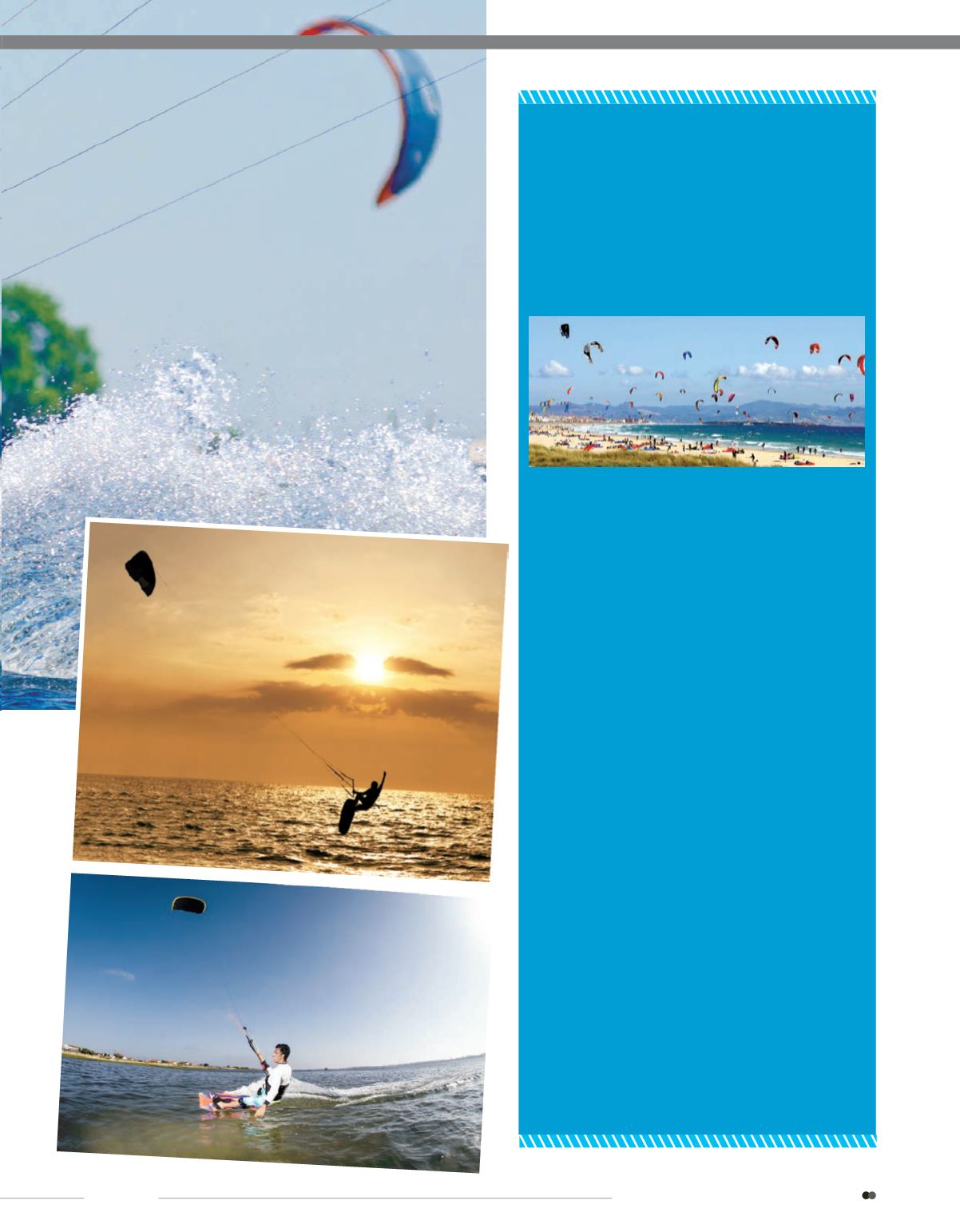

KITEBOARD TRAINING
Kiteboarding requires at least six-hours of training
under the standards of the International Sailing
Federation and the Turkish Sailing Federation. This
training aims to teach users to understand the
flying principles of a kite, analyze the structure of
a field andwind, fly a kite in a controlledmanner to
and rescue themselves or wait for someone else
to rescue them in case of emergency.
Kiteboarder TrainingMethods
The six-hour kiteboard training, which is required
under the standards of the Turkish Sailing
Federation, doesn’t includewater start training.
At this point, it is appropriate to take an extra
four hours of board training, totaling 10 hours of
training in the first stage. The 10 hours of training
is generally divided into three days. The process
startingwith theoretical training, continues by
teaching how to set hand control with a small
training kite. In these two hours, a foundation is laid
for basic kite-flying skills and the next stages.
After learning basic kite-flying skills and practicing
installing a big kite, the training continues with a
big kite on thewater. Everything learned in the
previous stage is repeated and practicedwith a
big kite at this time. Users discover the strong and
weak sides of thewind by body dragging under
the supervision of a trainer during the first step
and then by themselves. Thus, flying control is
learnedwell. In this stage, which lasts three hours
on average, users get to knowhow to install their
kites, how to enter thewater by themselves and
how to practice all safetymeasures. At the last
stage of the training, one is taught how to use the
board and kite simultaneously and to ride at least
100-meters on thewater to the right and left.
Then, technical training is given to teach how to
ride back to the point where the users started on
thewater and it is practiced. This process lasts four
hours on average.
yesilay.org.tr
47
YEŞiLAY
•
October-November-December 2015

















